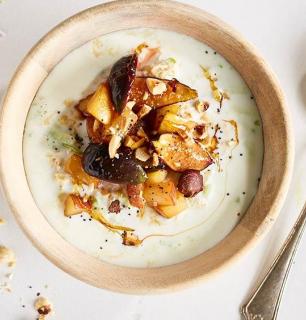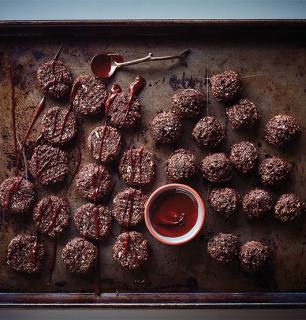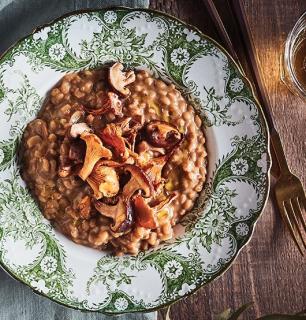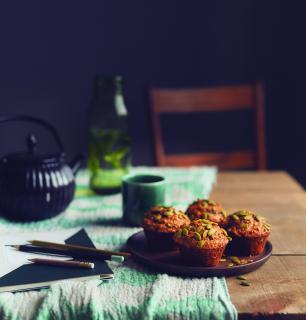A unique jam maker
The French baguette will likely soon be on the UNESCO Intangible Cultural Heritage list, in the same way as the Taj Mahal and the complete architectural work of Le Corbusier. From now on, we can enjoy a baguette even more by slicing it and using the ends to fashion a perfect vessel to fill with sweet things such as a high-quality jam.
At the time of its inception, in 1992, Première Moisson was a neighbourhood bakery, a place for sharing. “Beyond bread, which has always been our purpose,” recalls Josée Fiset, “we would prepare our cured meats and serve our pastries accompanied by honey and jam. We didn’t aim for thick texture full of pectin, but rather jams that were more liquid, not too cooked, with chunks of fruit like the ones prepared by my grandmother.”
It was a pure coincidence that their neighbours in Vaudreuil-Dorion shared the same outlook. They cultivated the land and prepared jams in small batches from their harvests. Only a few words needed to be exchanged to set the stage for a true local product to be launched, placed in jars by hand, labelled individually and prepared like at home, in several small pots rather than in industrial vats.
Together, they developed a long, invaluable collaboration. Today, no less than 60,000 jars of jam are filled annually, one by one, using the traditional, trusted ladle.
“In the beginning, it was Guy [Geoffrion] who sported the apron and prepared the seasonal harvests,” explains Lucie Déziel, jam artisan. “Ten years later, my arrival coincided with increased needs. We made choices – not always the most profitable, mind you – but we know that we never compromised quality.”
Time proved that jam makers hone their craft through making jam over time and that the art of jam hinges on the choice of fruit with the aim of optimizing its flavour, consistency and conservation.
FLAVOUR
Strawberries, raspberries, blueberries, cranberries, rhubarb: most of the jams they produce are classics. “We prefer to choose local options as much as possible,” explains Lucie. “Our wild blueberries come from Quebec’s Lac-Saint-Jean region, and their flavour makes those from California pale in comparison. We use the fall variety of strawberries, which are more conducive to stewing, and we are supplied by two producers from Joliette and Saint-Grégoire.
“Each berry that we cook has reached its peak, ripened on the plant, and frozen the moment it's harvested. We have pots simmering all year long. “A frozen fruit gives better results when cooked than fresh fruit,” she points out, “because it cooks down more easily.”
While she goes on about volume, chemistry and consistency in the kitchen where several household cooking stoves are lined up, you might think you’re in an appliance store.
CONSISTENCY
Our ancestors, who had no access to refrigeration, generally cooked jams for a very long time using abundant amounts of sugar, until they acquired a very thick consistency and a dark colour. This is how they ensured that the moisture in the fruit was fully evaporated and that the jams could be preserved for a long time, subject to proper storage conditions in perfectly airtight containers.
“It’s no coincidence that it’s called ‘jam’ in English,” points out the jam artisan, “because it’s ‘jammed.’ It’s not what we’re looking for. We want to taste the fruit, closer to its state of freshness. Pectin – from the Greek pectos, meaning ‘fixed’ or ‘firm’ – is most often extracted from dried apple pomace. It allows the fruit to be cooked for a shorter period and preserves its vibrant colour; but it does, however, represent another form of sugar and we seek to keep it to a minimum. The one we use is imported from Germany because, surprisingly and unfortunately, although we are considered leaders in apple growing here, we simply do not produce quality pectin!
CONSERVATION
“We therefore aim to preserve, while lowering the sugar content. By cutting the sugar and decreasing the cooking time, we compromised the jam’s longevity, requiring it to be refrigerated once the container has been opened. Maple syrup is a fine solution to replace refined sugar, and freezing is a good option when the preference is to substantially reduce sweeteners. In our kitchens, everything is weighed; temperature and the rate of acidity are meticulously verified. The secret is to cook the fruits and sugar in equal quantities, and not for too long. But above all, I encourage you to freeze your fruits to prepare jams in January. Nothing quite matches that wafting aroma of stewing strawberries or raspberries to remind us of our beautiful yet fleeting summers.”
“Culture is like jam, the less we have, the more we spread it out.”
— Françoise Sagan
WORDS TO EXPRESS IT
The term “jam” has been standardized in the industry. Regardless of the fruit used, the law stipulates that a jam must contain at least 66% sugar (including the fruit’s natural sugar) and a minimum percentage of fruit, i.e., 45% for the first category and 27% for the second, which will bear the reference “with pectin.” When a product does not attain the required sugar standard, the industry uses the term “spread,” which is not regulated. As for the reference “no sugar added,” sugar has generally been substituted by fructose or concentrated grape juice, which also yields a sweet taste.
THE PERFECT BREAD
Unlike a slice of bread from a loaf, from which jam can easily drip through its open texture, the crust of a baguette, cut lengthwise in half, acts as a shell and retains the jam that trickles into the bread. With its crust just dry and thick enough and its soft and moist inside, the baguette is jam’s best friend: every bite offers the right proportion of crunch, sink-into-softness and oh-so-smoothness.
RASBERRIES IN FIGURES
With 503 hectares of crop area, Quebec ranks a strong second in raspberry production in Canada, after British Columbia. More than 1,300 tons of fruit are harvested every year and generate revenue in excess of $8 million.
HAPPY UNIONS
Lucie Déziel, loyal jam artisan for Première Moisson, comes up with endless taste combinations. In her vinaigrette, for example, she combines balsamic vinegar, oil and blueberry jam. To replace the infamous condiment for imperial rolls, the plum-not-plum sauce, nothing measures up to a great ground cherry jam. Salty-sweet fans – go ahead and experience these two surprising combinations on crackers: blueberry jam with pepper cream cheese, and pear-cranberry jam with foie gras… Oh, my!
by Andrée Fortier
Our recipes
See all recipes




